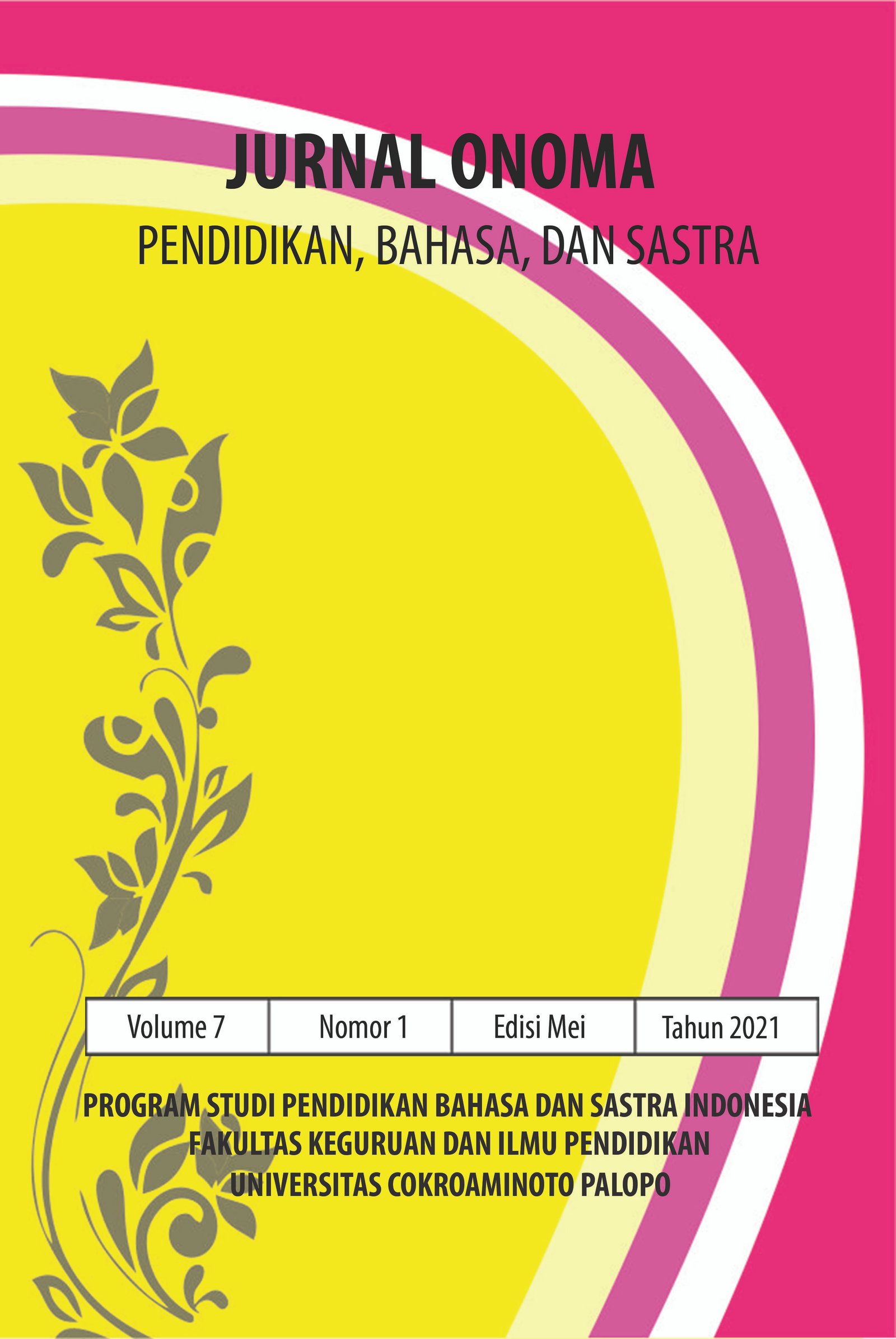Sapaan Kekerabatan pada Guyub Tutur Bahasa Lio
https://doi.org/10.30605/onoma.v7i1.553
Keywords:
Greetings, Kinship, Lio LanguageAbstract
Abstract
This study aims at describing the kinship greeting in Lio's speech using sociolinguistic theory. The approach used in this study is a qualitative approach. Data collection uses the method of listening, proficient and fishing rod. This means that researchers directly communicate with informants to gather information about kinship greetings in Lio's spoken language. Both of these methods are complemented by interview, note-taking, and documentation techniques.
The results showed that in the kinship relationship based on lineage (direct linkage) in Lio's speech in Ende district, there were 16 greeting words, namely Ema, Ine, Babo, Mamo, Eda, No`o, Weta, Nara, Ka`e, Aji, Ana mamo, Ana embu, Ame du`a, Ine du`a, Ame Lo`o and Ine Lo`o. It is stressful that there are 13 kinship greeting words based on the line of marriage in Lio's speech, namely Ema (tu`a), Ine (tu`a), (Ana) tu`a, Ane, Tata / fai eda, No`o, Haki no` o, Weta, Nara, Kae, Aji, Ipa, and Eja.
Downloads
References
Chaer, Abdul dan Leonie Agustinus. 2010. Sosiolinguistik, Perkenalan Awal. Jakarta: Rineka Cipta.
Harimurti, Kridalaksana. 2007. “Bahasa dan Linguistik”. dalam Pesona Bahasa: Langkah Awal Memahami Linguistik. Jakarta: Gramedia Pustaka Utama.
Kridalaksana, Harimurti.2012. Kamus Linguistik. Jakarta: PT. Gramedia
Mahmud dan Suntana, Ija. 2012. Antropologi Pendidikan. Bandung : Pustaka Setia
Mbete, Aron Meko dkk. 2006. Khazanah Budaya Lio-Ende. Ende: Pustaka Larasan.
Rahardi, R. Kunjana. 2004. Dinamika Kebahasaan .Yogyakarta : Mitra Gama Wijaya.
Suhardi, Basuki. 2012. Pedoman Penelitian Sosiolinguistik. Jakarta: Pusat bahasa
Departemen Pendidikan Nasional.
Sumampouw, Elfrida W.S. 2000.”Pola Penyapaan dalam Interaksi Verbal dengan Latar Multilingual” Dalam Kajian Serba Linguistik. Editor Bambang Kaswari Purwo. Jakarta. Gunung Mulia.
Utami, Santi Pratiwi Tri. 2010. “Realisasi Kesantunan Berbahasa: Upaya Pengoptimalan Peran Bahasa Indonesia Sebagai Pemersatu bangsa” dalam Proseding PIBSI XXXII.
Wibowo, R. Mashudi dan Agustin Retraningsih. 2015. “Dinamika Bentuk Sapaan Sebagai Refleksi Sikap Berbahasa Masyarakat Indonesia”. Jurnal Humaniora (Online) Vol. 27, No. 3 2015 (http://jurnal.ugm.ac.id) Diakses tanggal 7 Januari 2020
Wijana, I Dewa Putu dan Muhammad Rohmadi. 2011. Analisis Wacana Pragmatik Kajian Teori dan Analisis. Surakarta: Yuma Pustaka`
Sugiyono. 2012. Metode Penelitian Kuantitatif Kualitatif dan R&D. Bandung: Alfabeta.
Downloads
Published
How to Cite
Issue
Section
License
In submitting the manuscript to the journal, the authors certify that:
- They are authorized by their co-authors to enter into these arrangements.
- The work described has not been formally published before, except in the form of an abstract or as part of a published lecture, review, thesis, or overlay journal.
- That it is not under consideration for publication elsewhere,
- That its publication has been approved by all the author(s) and by the responsible authorities – tacitly or explicitly – of the institutes where the work has been carried out.
- They secure the right to reproduce any material that has already been published or copyrighted elsewhere.
- They agree to the following license and copyright agreement.
License and Copyright Agreement
Authors who publish with Onoma Journal: Education, Languages??, and Literature agree to the following terms:
- Authors retain copyright and grant the journal right of first publication with the work simultaneously licensed under Creative Commons Attribution License (CC BY 4.0) that allows others to share the work with an acknowledgment of the work's authorship and initial publication in this journal.
- Authors are able to enter into separate, additional contractual arrangements for the non-exclusive distribution of the journal's published version of the work (e.g., post it to an institutional repository or publish it in a book), with an acknowledgment of its initial publication in this journal.
- Authors are permitted and encouraged to post their work online (e.g., in institutional repositories or on their website) prior to and during the submission process, as it can lead to productive exchanges, as well as earlier and greater citation of published work.

















